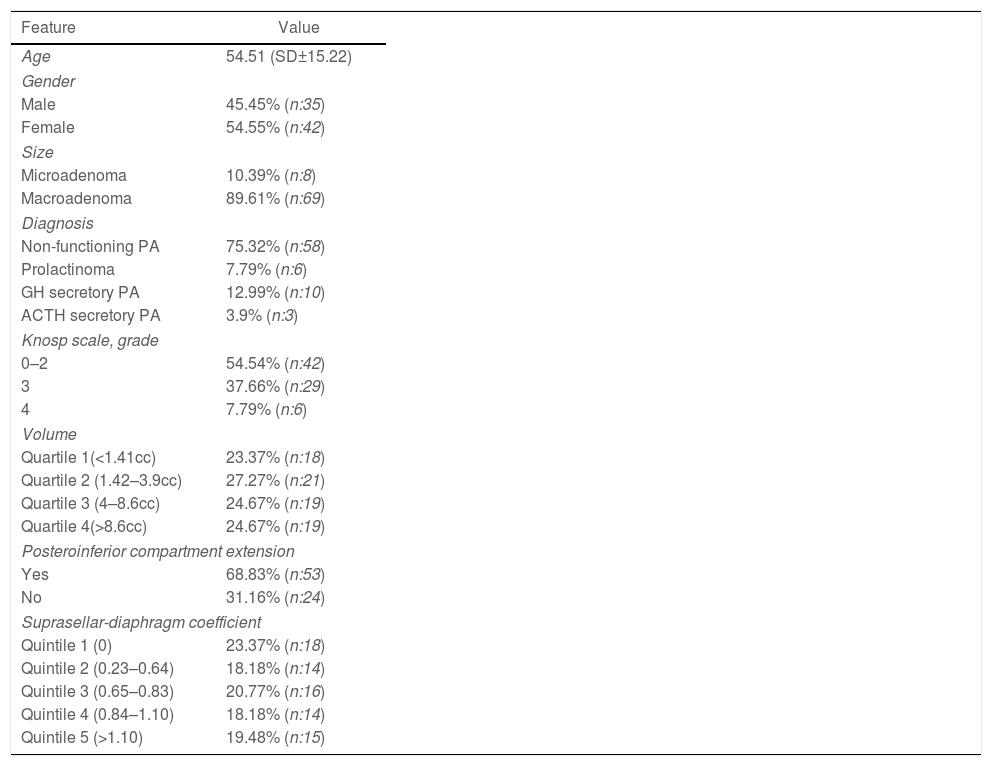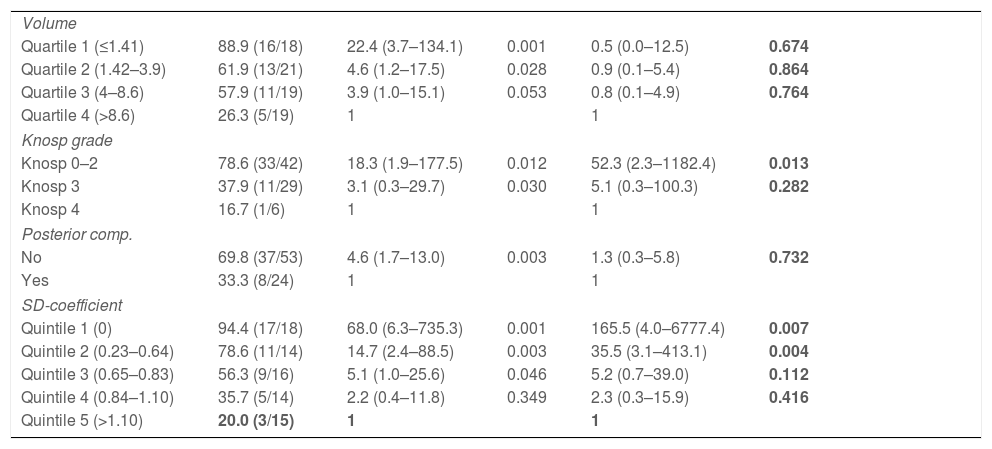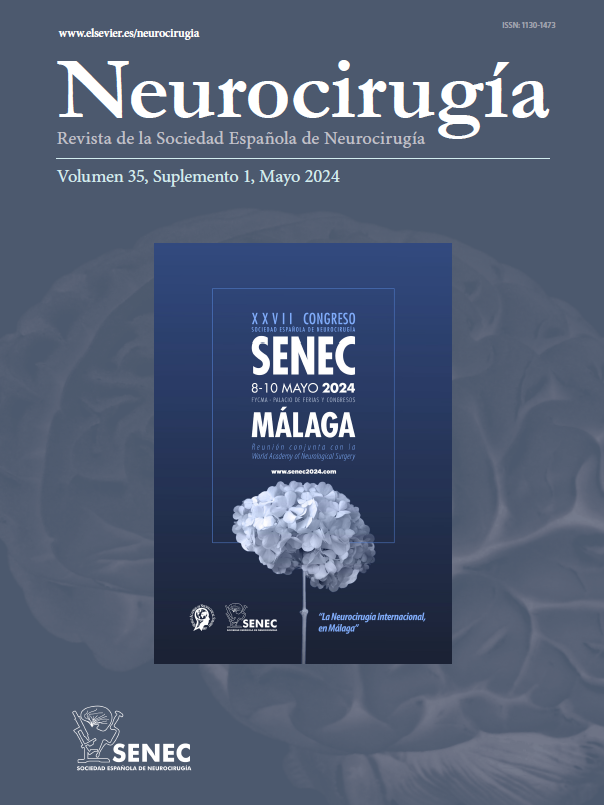The aim of this project is to study several anatomical-radiological features of pituitary adenomas obtained from preoperative radiological images and to analyze their relationship with the extent of resection achieved through the endoscopic endonasal approach. The second objective was to create a prediction model of the extent of resection.
Material and methodsWe retrospectively evaluated 105 patients. Tumor volume, Knosp grade, suprasellar-diaphragm coefficient and invasion of the posterior compartment have been analyzed. The extent of resection was assessed by analyzing the postoperative magnetic resonance. We created the predictive scale using statistically independent variables.
ResultsWhen each of the variables has been studied individually, a statistically significant value of all of them is appreciated to obtain a complete resection. However, only the Knosp grade and the suprasellar-diaphragm coefficient had a statistically significant value as independent variables. The sum of the Odds Ratio obtained from the Knosp scale, and the suprasellar-diaphragm coefficient gives the probability of complete resection. A new set of cases was employed to validate the scale.
ConclusionsThe cavernous sinus invasion and the newly designed suprasellar diaphragm coefficient are directly related to the extent of resection in pituitary adenoma surgery performed by a transellar endoscopic approach. Moreover, based on both radiologic factors, a predictive scale may predict the probability of complete resection in a series of patients.
El objetivo principal de este proyecto es estudiar diversas variables anatomo-radiológicas de los adenomas hipofisarios obtenidas a partir de imágenes radiológicas preoperatorias y analizar su relación con el grado de resección logrado mediante el abordaje endoscopio endonasal. El segundo objetivo ha sido crear un modelo de predicción del grado de resección tumoral.
Material y métodosSe ha evaluado retrospectivamente a 105 pacientes, analizando el volumen tumoral, el grado de Knosp, el coeficiente supraselar-diafragma y la invasión del compartimento posterior. El grado de resección se ha evaluado mediante el análisis de la resonancia magnética postoperatoria. Se ha creado la escala predictiva empleando variables estadísticamente independientes.
ResultadosAl estudiar cada una de las variables de forma individual, se aprecia un valor estadísticamente significativo en cada una de ellas para obtener una resección completa. Sin embargo, tan solo el grado de Knosp y el coeficiente supraselar-diafragma tuvieron un valor estadísticamente significativo como variables independientes. Empleando la suma de la odds ratio obtenida de la escala Knosp y el coeficiente supraselar-diafragma, se ha obtenido la probabilidad de resección completa. Se ha empleado un nuevo conjunto de casos para validar la escala.
ConclusionesLa invasión del seno cavernoso y el coeficiente supraselar-diafragma son variables que están directamente relacionadas con el grado de resección en la cirugía de adenoma hipofisario realizada mediante un abordaje endoscópico transellar. Además, basándose en ambos factores radiológicos, se ha creado una escala predictiva que permite predecir la probabilidad de resección completa en una serie de pacientes.
Article

If it is the first time you have accessed you can obtain your credentials by contacting Elsevier Spain in suscripciones@elsevier.com or by calling our Customer Service at902 88 87 40 if you are calling from Spain or at +34 932 418 800 (from 9 to 18h., GMT + 1) if you are calling outside of Spain.
If you already have your login data, please click here .
If you have forgotten your password you can you can recover it by clicking here and selecting the option ¿I have forgotten my password¿.















